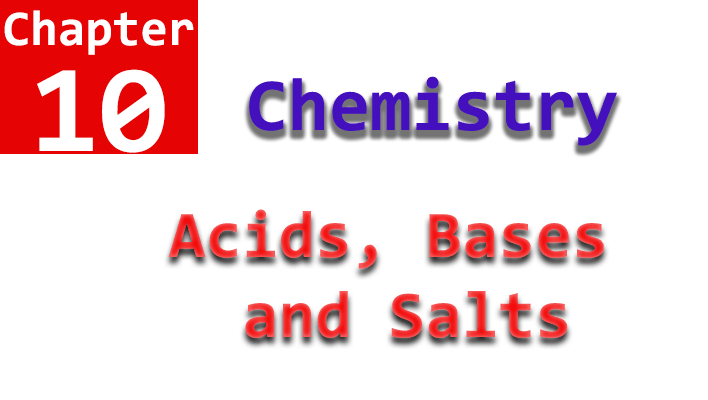Notes of 10th Chemistry Chapter No. 10 Acids, Bases and Salts, All Long Questions, Short Questions and MCQ’s.
In this introductory section, we explore the concepts of acids, bases, and salts. These three classes classify a wide range of organic and inorganic compounds. The historical background mentions the contributions of early chemists like Jabir Bin Hayan and Lavoisier in understanding acids and their properties. The concept of acids and bases evolved over time, with Arrhenius, Bronsted-Lowry, and Lewis proposing their respective theories.
Long Questions of Chapter No. 10
Short Questions of Chapter No. 10
MCQ’s of Chapter No. 10
- 10th Class Pak Study Textbook
- 9th and 10th Class General Science Textbook
- Chapter No. 9 Notes 10th Chemistry
- Biology 10th Class Past Papers
- English Past Papers of 10th Class
The Arrhenius concept defines an acid as a substance that dissociates in water to give hydrogen ions (H+), while a base dissociates in water to give hydroxide ions (OH-). This concept is limited to aqueous solutions and compounds containing hydrogen and hydroxide ions. Bronsted-Lowry concept, on the other hand, defines acids as proton donors and bases as proton acceptors. This concept considers a broader range of compounds, including those without hydrogen and hydroxide ions.
The Lewis concept takes a step further, defining acids as electron-pair acceptors and bases as electron-pair donors. It allows for a more general classification, considering substances with unshared electron pairs or empty orbitals.
The section also lists the physical and chemical properties of acids. Acids react with metals, carbonates, and bases to form salts, water, and carbon dioxide gas in various chemical reactions.
The study of acids, bases, and salts is crucial in understanding many chemical processes and reactions occurring in nature and industries. These concepts are fundamental in fields such as chemistry, biology, and environmental sciences.

